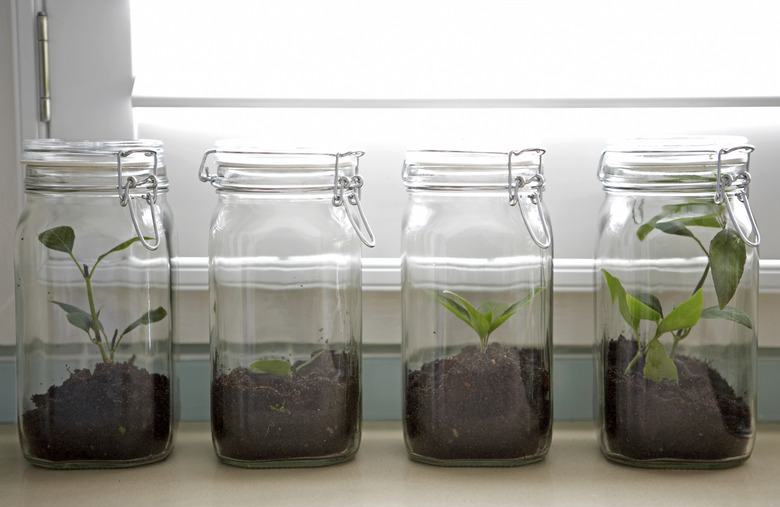Do Plants Grow Faster In Light Or Dark?
Plants grow in both dark and light conditions, although most plants grow faster at night. Despite this, the daytime hours are also a vital component of growth. The effects of light and darkness on growth and development also change across plant life stages.
How Fast Do Plants Grow?
How Fast Do Plants Grow?
Each of the 390,900 known plant species has a different rate of growth. Wolffia spp. are the fastest-growing and smallest plants in the world. This tiny aquatic flowering plant, which floats in ponds or streams, measures only 1/42 inch long. Bamboo of the Poaceae family and Bambusoideae subfamily are the fastest-growing plants on land, capable of growing up to two inches per hour, reaching 60 feet tall in as little as three months.
Large trees tend to be the slowest-growing plants. New Zealand kauri (Agathis australis) live for over 2,000 years, reach over 164 feet tall and have trunk circumferences of more than 52 feet. They get to their gargantuan size by slowly growing less than 0.28 inches in diameter and 14.2 inches tall on average each year. These growth rates are even slower in their first five years of life.
Cactus of the plant family Cactaceae also tend to have slow growth rates. Saguaro cactuses (Carnegiea gigantea), classic symbols of deserts in the American West, take 200 years to reach their full height of 45 feet, although the tallest on record was 78 feet tall. When they are young, they grow so slowly that they are only one inch tall at 10 years old.
What Makes a Plant Grow Taller?
What Makes a Plant Grow Taller?
The environmental factors plants need to grow taller are light, temperature, water, humidity and nutrition. While all plants need elements of these factors, the exact qualities depend on the species. For example, a desert cactus requires a very different environment to grow than an aquatic weed.
Plants are autotrophs, which means they convert these non-living environmental conditions into glucose energy using a process called photosynthesis. Cellular respiration is a process where the mitochondria, organelles found in the cells of all organisms, break down this energy for use. For a plant to grow, the rate of photosynthesis must be greater than the rate of respiration.
One factor that helps speed up photosynthesis is warmer temperatures. In warmer conditions, the plants' photosynthetic processes are more efficient, leaving more energy for cellular respiration and therefore growth. This is why plants tend to grow faster and produce flowers and fruit in spring and summer rather than in winter.
What Time of Day Do Plants Grow?
What Time of Day Do Plants Grow?
While plants will grow when kept under 24-hour light, day and night cycles are very important. During daylight hours, plants are photosynthesizing to build up their energy reserves, and the plants are continually respiring. When temperatures cool at night, cellular respiration increases as the plants use up their energy reserves, often resulting in growth spurts.
Experiment on Plant Growth in Light and Dark
Experiment on Plant Growth in Light and Dark
Sunflower seedlings grown without exposure to light get taller than seedlings grown under normal lighting conditions. When seedlings are grown without light, they also do not unfold their cotyledon, the plant's first two leaves they use to start photosynthesis. Seedlings that grow under standard lighting slow their stem growth shortly after reaching the light and then develop their cotyledons to begin photosynthesis.
Most seeds germinate underground, so their first stages of growth are naturally in the dark. Seedlings can grow for a certain time in the dark as they have a limited chemical energy store in their cells. Once these energy stores run out, they need light exposure to produce their energy using photosynthesis. Under normal conditions, light exposure stimulates hormones that trigger the seedling to both stop its stem from growing taller and to switch to leaf development.
References
- Library of Congress: What Is the Smallest Flower in the World?
- New Zealand Department of Conservation: Kauri
- New Zealand Journal of Forestry Science: Growth and Productivity of New Zealand Kauri (Agathis Australis (D.Don) Lindl.) in Planted Forests
- University of New Hampshire Center for Freshwater Biology: Wolffia
- BBC: Kew Report Makes New Tally for Number of World's Plants
- National Park Service: Saguaro Cactus
- Oregon State University Extension Service: Environmental Factors Affecting Plant Growth
- University of Notre Dame Center for STEM Education: March Phenomenon: Light vs. Darkness
Cite This Article
MLA
Jerrett, Adrianne. "Do Plants Grow Faster In Light Or Dark?" sciencing.com, https://www.sciencing.com/do-plants-grow-faster-in-light-or-dark-12380615/. 20 October 2021.
APA
Jerrett, Adrianne. (2021, October 20). Do Plants Grow Faster In Light Or Dark?. sciencing.com. Retrieved from https://www.sciencing.com/do-plants-grow-faster-in-light-or-dark-12380615/
Chicago
Jerrett, Adrianne. Do Plants Grow Faster In Light Or Dark? last modified March 24, 2022. https://www.sciencing.com/do-plants-grow-faster-in-light-or-dark-12380615/
